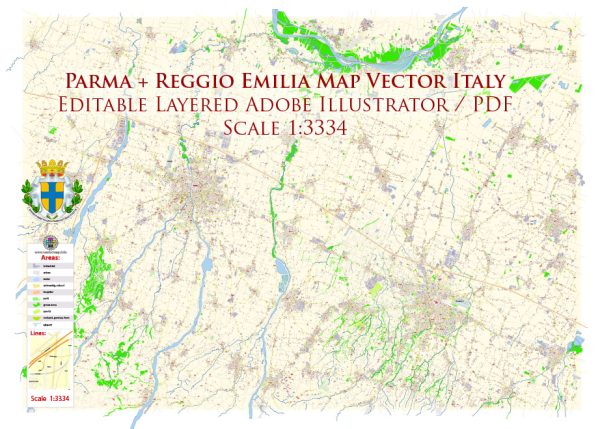Parma and Reggio Emilia are two historic cities in the Emilia-Romagna region of northern Italy, each with a rich history of urban development.
Parma:
- Ancient Origins: Parma’s history dates back to Roman times when it was known as Parma. The city flourished as a Roman colony, and remnants of Roman structures, such as the Cathedral of Santa Maria Assunta, still stand as a testament to its ancient origins.
- Medieval and Renaissance Periods: Parma experienced significant growth during the medieval and Renaissance periods. The city became a center for arts and culture, with the construction of landmarks like the Palazzo della Pilotta and the Farnese Theatre. The ruling Farnese family played a crucial role in shaping Parma’s architectural and cultural landscape.
- Spanish and Austrian Rule: Parma passed through various rulers, including Spanish and Austrian domination. These periods influenced the city’s governance and architecture. The Habsburgs, in particular, left their mark on Parma with the construction of the Ducal Palace.
- Unification of Italy: In the 19th century, Parma, along with other Italian states, played a role in the unification of Italy. The city became part of the Kingdom of Italy in 1860.
- Modern Era: Parma continued to grow and modernize in the 20th century. The city’s urban development saw the expansion of infrastructure, industry, and educational institutions.
Reggio Emilia:
- Medieval Origins: Reggio Emilia’s history traces back to the Roman era, but it gained prominence during the medieval period. The city was an important center for trade and commerce, contributing to its economic and cultural development.
- Communal Rule: During the Middle Ages, Reggio Emilia adopted a communal form of government, emphasizing citizen participation. This period saw the construction of key civic buildings like the Town Hall.
- Renaissance Influence: The Renaissance period left an indelible mark on Reggio Emilia’s urban development. The city became a hub for humanist thought, and architectural gems such as the Basilica della Ghiara and the Palazzo Magnani reflect this cultural flowering.
- Austrian and Napoleonic Rule: Like Parma, Reggio Emilia experienced rule by various foreign powers, including the Austrians and the French under Napoleon. These periods had an impact on the city’s administration and infrastructure.
- Italian Unification: Reggio Emilia played a role in the movement for Italian unification, and in 1859, the city became part of the Kingdom of Italy.
- Modernization and Growth: In the 20th century, Reggio Emilia, like Parma, underwent modernization and industrial development. The city maintained its focus on education and culture, with the establishment of the Loris Malaguzzi International Centre, a renowned center for early childhood education.
Both Parma and Reggio Emilia continue to be vibrant centers of culture, history, and commerce, with their urban development shaped by a rich tapestry of influences from different historical periods. Today, they are known for their architectural heritage, cultural events, and culinary traditions.


 Author: Kirill Shrayber, Ph.D.
Author: Kirill Shrayber, Ph.D.